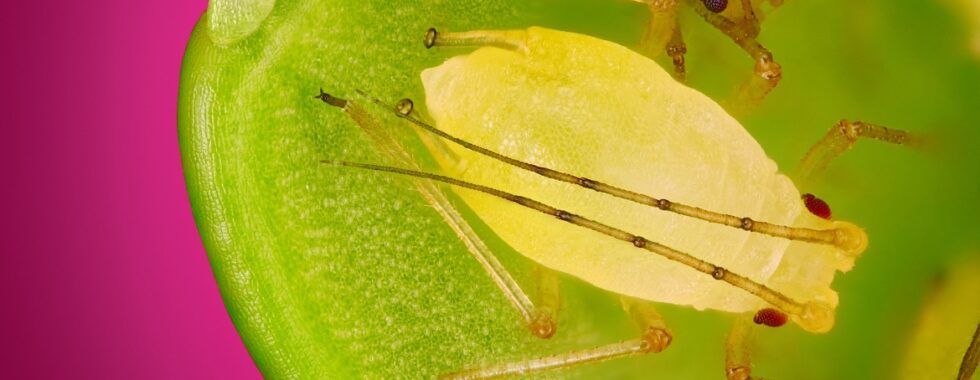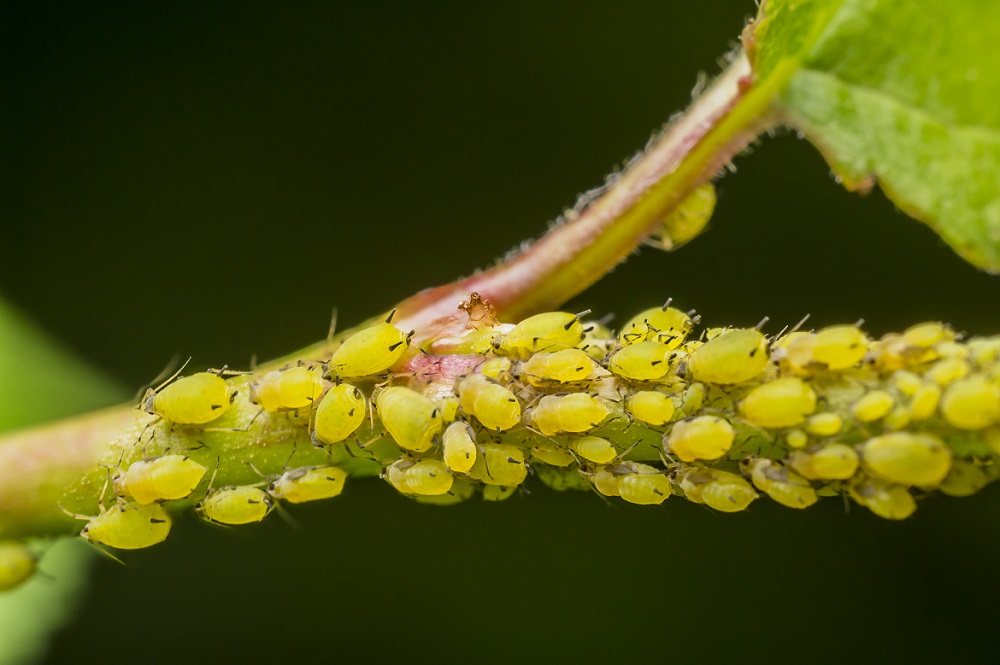How to identify and control aphids
Aphids are a common pest of ornamentals, fruit trees and vegetables. Once spread, they may cause massive losses and transmit plant viruses.
What are aphids and how you can identify them?
Aphids are small, soft-bodied insects that suck and feed primarily on plant sap. They belong to different families that collectively form a superfamily called Aphidoidea. There are over 5,000 species of aphids. however, about 250 of them are pests of agricultural and horticultural crops.
Aphids vary in color, with green and black colors being the most common, but they can also appear be red, brown, gray, and yellow. Adult aphids have antennae, however some have wings, while others are wingless at maturity. Most aphids have two cornicles towards the back of their abdomen.
Aphids shed their exoskeleton as they grow in size. Therefore, white skin casts are usually a sign of aphid presence.
Life cycle of aphids
Aphids have a unique life cycle that enhances their survival and colonization of new areas. They live in colonies and their population grows exponentially. Interestingly, wingless female aphids reproduce asexually, in a process known as parthenogenesis, and give birth to live young females. The young offspring then start feeding, grow steadily and attain maturity within 7 to 10 days.
Winged adult males and females copulate toward the beginning of winter. and the female aphid lays fertilized eggs that can withstand the cold winter season and hatch when temperatures get warmer.
Each adult female aphid produce roughly 50-100 new offspring. They recurrently reproduce, and within a short time, the area is overstuffed with aphids. Some of the young offspring will grow into winged adult aphids that migrate to new places.
The most common aphids include:
- Green peach aphid (Myzuspersicae)
- Cabbage aphid (Brevicorynebrassicae)
- Turnip aphid (Lipaphiserysimi)
- Potato aphid (Macrosiphumeuphorbiae)
Examples of plant crops affected by aphids include:
- Wheat, corn
- Cabbages, potatoes, tomatoes, capsicums
- Soybeans, black beans, green grams
- Pumpkins, cucumbers, melons
- Roses
- Mangoes, citrus, and other fruit crops
What damages do aphids cause?
As stated earlier, aphids suck and feed on plant sap. They have tube-shaped piercing sucking mouthparts, known as stylets. Those mouthparts are adapted to pierce the plant and extract nutrient-rich sap. As a result, they will attach to stems, flowers, or plant leaves (mainly the lower side). Infested plants show the following symptoms and signs:
- Plant leaves will turn yellow, curl, and may display stunted growth.
- Invading the floral parts of the plant will deform flowers and damage fruits.
- Leaves and stems become sticky due to a sticky liquid matter known as honeydew. Because the honeydew is sweet, it is usually fed on by ants. As a result, ants have formed symbiotic relationship with aphids. In the relationship, ants protect aphids from their predators in exchange for honeydew as food. The most common aphid predators are ladybugs, spiders, green lacewing, praying mantis, etc.
Scouting and monitoring for aphids
Although aphids may not necessarily kill plants, they significantly affect crop yields. For this reason, growers should scout for aphids and control them. Note that aphids thrive and multiply during warm seasons and can hardly withstand winter or hot summer. They prefer to hide in buds and the bottom side of the leaf.
As a precautionary measure, growers should examine all the possible aphid hideouts, clear weeds, and prune excess plant leaves. Additionally, avoid applying excess nitrogen fertilizer as it attracts aphids.
How to control aphids
There are several approaches to control aphids:
Biological control
Beneficial insects, that are natural enemies of aphids can be used for aphid control. Such enemies include lady beetle, parasitic wasps, and lacewings.
Lady beetles provide a relatively low control and, therefore, are more effective in small areas.
Parasitic wasps lay their eggs inside the aphid and their larvae feed on the aphid from the inside.
Lacewings are also predators of aphids and are considered to be effective.
Organic control
Where chemical control is inevitable, farmers can use organic chemicals such as:
- Neem oil
- Insecticidal soaps
- Essential oils
Chemical control
Pesticides used against aphids include the following active ingredients:
Acetamiprid, Bifenthrin, Dinotefuran, Imidacloprid, Malathion, Thiamethoxam and more.



